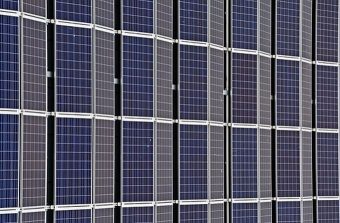
Hot off the presses, a new report released today by SEIA, The Solar Foundation, and Generation 180 shows vast growth in solar on K-12 schools in the United States. Solar capacity on our country’s schools has nearly doubled since the last version of this report in 2014, with 5,489 K-12 schools now powered by solar, totaling nearly 1,000 megawatts of electric generating capacity.
It’s no secret that many American schools are underfunded and classrooms often lack necessary resources for students to learn. Well, with the cost to install solar plummeting, schools are making the switch and seeing their electricity bills shrink, freeing up funds to use to strengthen what schools are here to do, which is teach our nation’s children.
The cost of a solar school installation pops off the page in this report, dropping 67% in the last decade and 19% last year alone. The result is a boom in installations allowing 4 million students in the United States to receive their education in a school powered by solar.
“There’s a reason solar is spreading so quickly across America’s school districts, and it’s pretty simple — when schools go solar, the entire community benefits,” said Abigail Ross Hopper, SEIA’s president and CEO.
These 5,000+ schools are running with much lower electricity bills, and those savings can go toward higher pay for our nation’s teachers, school supplies, textbooks and other essential resources. An investment in solar on a school is a direct investment in that community. Plus, what could be better than a science and conservation lesson right on the school grounds?
California schools lead the way in solar adoption with nearly 2,000 schools making the switch. But it’s notable that other states have picked up the pace including New Jersey, Arizona, Massachusetts, and New York. These states are setting an example and laying the groundwork for other states to follow.
When a school goes solar and cuts their energy costs, that puts investment back into what matters most: the students. Learn more about the report here and see if your community’s school has made the smart choice to invest in their community and go solar.
Source: cleantechnica.com


